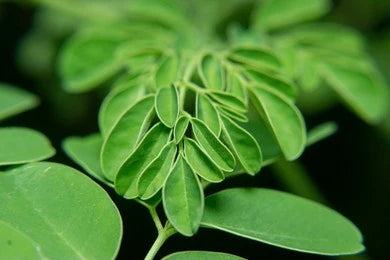The beautiful, tiny, deciduous Moringa oleifera tree has scant leaves. From a distance, the Moringa plant resembles leguminous species during flowering. This tree can reach a height of 10 to 12 meters, with a 45-centimeter trunk diameter. The smooth, dark greyish bark of moringa is encircled by a thick layer of cork. The bark of young shoots is green or purple with hairs. This tree has tripinnate leaves and a broad, open canopy resembling an umbrella. It has strong roots. Round-elliptic leaflets with a light underside and a dark green upper surface. There are flowers all year round. minga The fragrant, bisexual flowers of this plant have five uneven, finely veined, yellow-whitish petals surrounding them. Fruits are three-sided, dangling brown capsules that contain a large number of globular, dark brown seeds. Moringa seeds are spread by wind and air and have three pale, papery wings.
Habitat
Shigru is primarily indigenous to India and is widely distributed in the northern Sub-Himalayan regions of the country. Nowadays, it is grown all over the world in tropical and subtropical climates. Additionally, it can be found in tropical Asia, Florida, the Pacific Islands, West East and South America, Ethiopia, Sudan, and the Philippines.
Classification
- Kingdom – Plantae
- Order – Brassicales
- Family – Moringaceae
- Genus - Moringa
Names of Shigru
- Latin name – Moringa oleifera
- English name – Horse radish tree, Drumstick, Moringa
- Hindi name – Sahijjan, Munaga, Shigru
- Tamil name – Munagai
- Kannada name – Nugge mara, Nugge kayi
- Marathi name – Shevga
- Malayalam name – Muringa
- Sinhala name – Murunga
- Gujarati name – Saragyo
- Oriya name – Sujuna
- Punjabi name – Surjana
- Nepali name – Sajiwan
- Thai name – Ma rum
- Indonesian name – Kelor
Ayurvedic Properties
|
Particular |
Hindi / Sanskrit |
English |
|
Rasa (Taste) |
Tikta, Katu |
Bitter, Pungent |
|
Guna (Physical Property) |
Laghu, Ruksha, Tikshna |
Light, Dry, Sharp |
|
Virya (Potency) |
Ushna |
Hot |
|
Vipaka (Post-Digestive Taste) |
Katu |
Pungent |
Effects on Doshas
It balances Vata and Kapha doshas.
|
Charak Samhita |
Sushrut Samhita and Vagbhata |
|
Varunadi gana |
Practical uses
- An antioxidant herb is a moringa. It shields the body from a range of diseases and shields it from free radicals.
- These days, hypertension is one of the biggest issues. The powdered leaves and bark of the moringa plant are beneficial to the heart and circulatory system and are used to lower hypertension in the body.
- It is well known that drumstick fruit increases sperm quality and quantity. It strengthens the reproductive system in men.
- It is well-recognized that moringa leaves, seeds, and seedpods have anti-inflammatory properties. They serve as an anti-inflammatory. This powdered moringa leaves is excellent for gout, rheumatism, cramping, and arthritis.
- Additionally, this herb lowers elevated cholesterol and lowers the risk of heart disease.
- The body is shielded from the negative consequences of arsenic poisoning by moringa seeds.
- This herb strengthens teeth and bones and is high in calcium and magnesium. It is also used to treat certain bone diseases and osteoporosis.
- For skin that is radiant and healthy, apply dried moringa leaves.
- To cure a really bad headache, apply leaves to the forehead.
- Due to its antibacterial and anti-inflammatory properties, it is applied to wounds and ulcers and aids in rapid healing.
- Diarrhea and stomach ulcers are treated with tea made from moringa leaves.
- Moringa seed powder is used to treat scurvy and other skin conditions.
- Additionally, it has antibacterial properties and protects the body from boils and sexually transmitted infections.
- This plant's gum is a diuretic, astringent, abortifacient, and an excellent asthma remedy.
- In addition, leaves work wonders for fever, bronchitis, mucous membrane inflammation, and infections of the ears and eyes.
- It balances the vata and kapha doshas.
Part used
- Leaves, Fruits, Flowers, Bark, Seeds.
Dosage
- Powder - 1-3gm
- Decoction - 5-10ml

